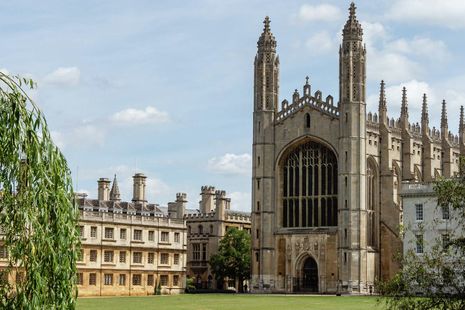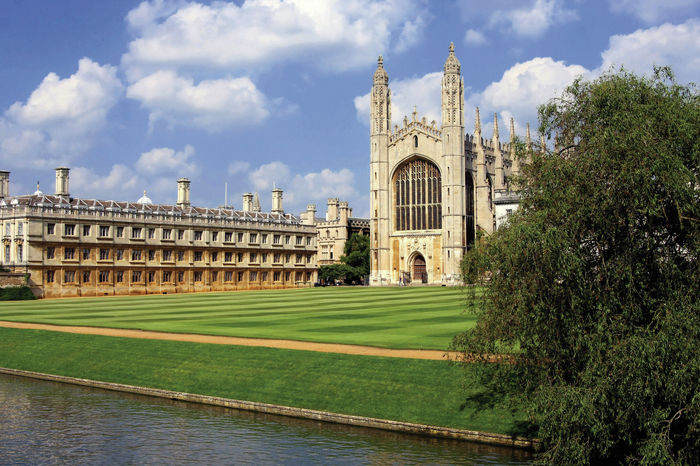King’s College respond to concerns about planned Turing statue
Historic England raised concerns that the statue “would harm… some of Cambridge’s most iconic views”

King’s College has clarified concerns about a forthcoming statue of Alan Turing, which appeared in national newspapers last week.
The reports quoted a letter sent from Historic England to Cambridge City Council which raised concern that “prominent sculpture at the heart of this highly sensitive site would harm its special character and encroach into some of Cambridge’s most iconic views.”
Historic England added that they were “advising how the proposal could be adapted to lessen the sculpture’s impact on its unique historic surroundings”.
However, a spokesperson for King’s told Varsity that Historic England has been consulted throughout the project and defended the intended location.
“The proposed sculpture has been discussed with Historic England from an early stage and a report from an independent heritage consultant [was] commissioned”, the spokesperson explained.
The Alan Turing statue, which has been designed by Sir Antony Gormley, will be a 12ft, three-tonne steel sculpture. Turing studied at King’s between 1931-1934.
The statue will be composed of 19 steel slabs stacked against each other in the form of an abstract metal figure, but the planning application has not yet been approved.
Reports last week explained that heritage officials were concerned about the consequences of the statue being placed overlooking the college’s famous chapel.
Claire Campbell from Historic England raised concern that “the introduction of an eye-catching sculpture in a prominent position within the landscape at King’s would be at odds with the existing character of the College”.
The view of King’s College from the College Backs is one of the most symbolic views of the city.
The college told Varsity that the statue’s location would not impede the view of the chapel as “the proposed site is over 200ft away from the Chapel, and the sculpture would not be visible within the iconic views of King’s.”
“King’s College is highly sensitive to the extraordinary architectural heritage represented by its buildings and our duty of care to these buildings and grounds is always at the forefront of our minds.”
The college claims that it took advice from several sources throughout the development of the project. This included scaled photographic simulations of how the sculpture would appear from different viewpoints.
“King’s is delighted that Antony Gormley, perhaps the most internationally admired English sculptor working today, and a Cambridge alumnus, has been inspired to design a sculpture in celebration of Turing.”
“While this figure certainly echoes our technological age, it also reflects in its posture both Turing’s intellectual aspiration and his human vulnerability,” the spokesperson added.
After the issue was covered by the national press, art critics soon contributed opinions.
Waldemar Januszczak, a former art critic for The Guardian, proposed that “the Turing sculpture is almost certain to look like an intrusive addition”.
“If there’s one thing contemporary art has proved over and over again it’s that the mix of gothic and contemporary doesn’t work,” he added.
The directors of both Tate Modern and Tate Britain presented a different perspective, highlighting the importance of honouring Alan Turing and reflecting on his remarkable contribution to the war effort.
“I am in debt to King’s College and its committee for giving me an extraordinary opportunity to think about this very particular person who unlocked the door between the industrial and the information ages,” said artist Sir Antony Gormley.
He added: “I do not want to make a statue but the very best sculpture that I can make”.
Gormley specialises in human sculpture, with work including the Angel of the North in Gateshead. Art by Gormley, who was a student at Trinity College, can be seen across the Sidgwick Site and featured in an exhibition at Kettle’s Yard in 2018.
 News / Uni Scout and Guide Club affirms trans inclusion 12 December 2025
News / Uni Scout and Guide Club affirms trans inclusion 12 December 2025 News / Cambridge Vet School gets lifeline year to stay accredited28 November 2025
News / Cambridge Vet School gets lifeline year to stay accredited28 November 2025 Science / Did your ex trip on King’s Parade? The science behind the ‘ick’12 December 2025
Science / Did your ex trip on King’s Parade? The science behind the ‘ick’12 December 2025 News / Cambridge study finds students learn better with notes than AI13 December 2025
News / Cambridge study finds students learn better with notes than AI13 December 2025 News / Pembroke to convert listed office building into accom9 December 2025
News / Pembroke to convert listed office building into accom9 December 2025








